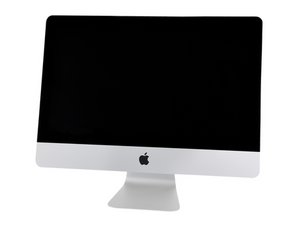As a rule of thumb your CPU choices are limited to the series on what was offered. The reason is mostly two fold
- The micro-code which sits within the systems firmware (EFI)
- The systems power and cooling
But before you make the jump to a newer CPU your system may not offer the ability! Apple has on some of their 21.5 systems soldered the CPU to the logic boards and the chip you are looking at may not offer enough improvement given the risks of opening your system if you damage something in the process.
So Lets look at what your system was offered with iMac18,2 These three systems are based on the same Intel CPU Kaby Lake architecture:
So any one of these would seamlessly work in your system. Now lets look at the CPU you had asked about:
Clearly the architecture is different being part of the Coffee Lake family. As such the micro code needed is newer than what Kaby Lake CPU’s used as such there is a strong possibility it won’t work or the performance maybe limited to what Kaby Lake CPU’s offered.
Lets take a deeper dive into the performance of these chips. Here’s the iMac18,2 systems. And here’s the i7 7700 Vs the i7-8700
What makes this hard is the jump from 32 to 64 bit Geekbench tests in this comparison. But did you not the RAM difference? PC4-19200 DDR4 Vs PC4-21300 DDR that in its self can explain a good portion of the performance difference! As well as the L1 & L2 caches in the case of multi-core performance.
Review this guide Changement dissipateur thermique iMac Intel 21,5" écran Retina 4K (2017) on the needed steps make sure you use the correct tools to take off the display as you can easily damage it which would be an expensive mistake and getting the CPU heat sink back in place is a bear! Many people have damaged the socket in the process and don’t over do the thermal paste and use the correct one.
Sadly I can’t tell you if it will work or not as its rarely tried.
Cette réponse est-elle utile ?
A voté
Annuler
Indice
0
Annuler
Faites défiler ce fil pour trouver l'endroit approprié pour y placer ce commentaire. Cliquez ensuite sur « Ajouter commentaire à cette contribution » pour le déplacer.


 35
35  329
329  971
971